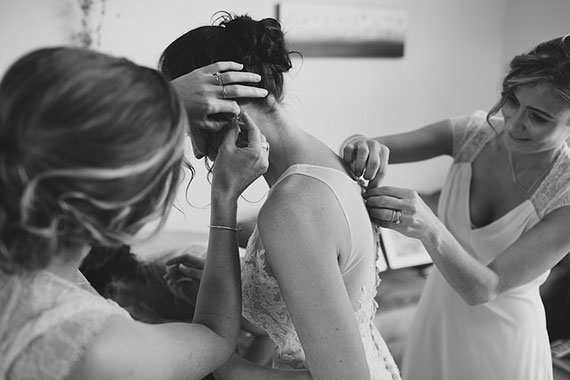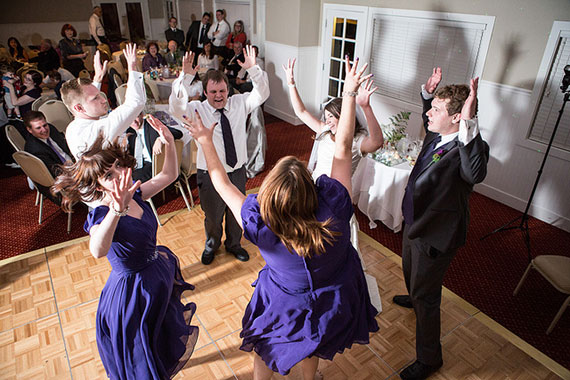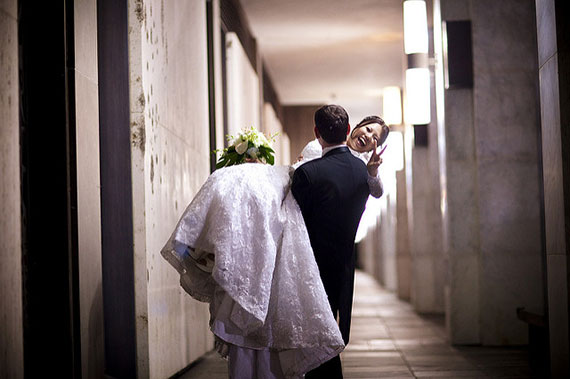Before I go into the wedding day requirements for a second photographer, it would be a good idea to think about what should be considered before the event.

Photo by Ryan Polei; ISO 500, f/2.5, 1/160-second exposure.
First things first, you may be trying to get work as a second photographer to get started in the industry before launching into a wedding as a lead photographer. This can often be difficult, so be prepared to travel to an area outside what would be considered your territory. Photographers are business people and might be wary of training a competitor, but they may also be looking for a regular second who they can trust and with whom they work well.
Find out about the principal photographer’s style. The main photographer will have been booked based on things such as style of images, personality, and customer service. So it’s sensible to find out a bit about the lead. Find out their dress code and be respectful of it even if it’s not your normal dress code. Prepare your equipment: make sure it’s clean, batteries charged, cards formatted if using your own, and find out if the main photographer requires your cameras’ time to be synchronized.
On the day of the wedding, make sure you are punctual. If the location is somewhere you haven’t been before, do a bit of preparation to know the area. Google Maps is a useful tool for research; during my time as a wedding photographer in Lancashire, it has proven to be invaluable.
Then comes meeting the wedding party for the first time. Be confident, polite, and respectful to everyone, including other vendors that are part of the day. You may be thinking this is all obvious, but little things can often be forgotten when nerves and pressure kick in.
Now we come to the working side of the day. I will break these down to bullet points. There may be other things that can be added to the list, but these are the ones that I consider important.
Important Tasks to Consider
- Be an assistant to the main photographer. Running errands, gathering guests for group photos, moving equipment around, watching gear, holding reflectors, flashes, video lights and generally doing any task that is asked of you.
- Get the shots you are asked to get and inform the lead when you have them.
- Take the camera away from your eyes and look around for the reportage shots, kids playing, different angles that can make a shot look natural, and details that the main photographer may not see.
- Watch for things that the main photographer may miss—background distractions, for example
- Get detail shots that may be of use for album design as background images.

Photo by ron.aguilar@gmail.com; ISO 1250, f/2.8, 1/160-second exposure.
- Be prepared to take the lead in the event the main photographer has to break away. This may be the scary part, but act with confidence and it will be fine.
- Be aware of the main photographer’s plans. Remind him/her if you think something has been missed. It will be appreciated that you are showing you are thinking about what’s happening.
- Think ahead. If you think the need for a reflector is coming, get it in your hand. If you know the need for a tripod is coming, get it and extend the legs in preparation.
- But most importantly, learn something every time and enjoy it. You will be part of a team so make sure you work that way.
Now For Some of the Do Nots:
- If you have your own photography business, don’t give out your cards or try to drum up your own business. These are not your clients and that is to be respected at all times.
- Do not shoot like the paparazzi unless you are specifically told to. The main photographer would rather have a smaller set of well executed, high quality shots than a thousand shots taken in the hope of 20 percent being successful.
- Do not just shoot over the shoulder of the main photographer to get some portfolio shots unless permission has been gained. It can be very off putting if it hasn’t been discussed. If it has been agreed to in advance, then the main photographer will have to inform clients that some training is taking place.
- Do not publish images on blogs or other venues without permission from the main photographer. If permission is given, credit the main photographer. The copyright remains with the photographer/business for which you are working.
- Do not chew gum, smoke, drink alcohol, swear, et cetera, if that is what is requested by the main photographer.

Photo by Emily Hanna; ISO 1600, f/1.8, 1/80-second exposure.
These are just a few of the basic things to consider. Hopefully this will help you to be an asset if you are a second shooter.
About the Author:
Paul Brown produces wedding photography in Lancashire and is also a principal wedding photographer with Yorkshire & Lancashire wedding photographer, Mark Pearson Photography.
The second photographer may also need to take over if the lead photographer has an urgent issue or emergency come up. Such as in this case where the primary photographer was caught off guard by a fountain:
Whoops! Good luck and have fun. :)
Go to full article: Wedding Photographer Assistant Tips
What are your thoughts on this article? Join the discussion on Facebook
PictureCorrect subscribers can also learn more today with our #1 bestseller: The Photography Tutorial eBook
The post Wedding Photographer Assistant Tips appeared first on PictureCorrect.
from PictureCorrect https://ift.tt/2KDRc1l
via IFTTT







0 comments:
Post a Comment